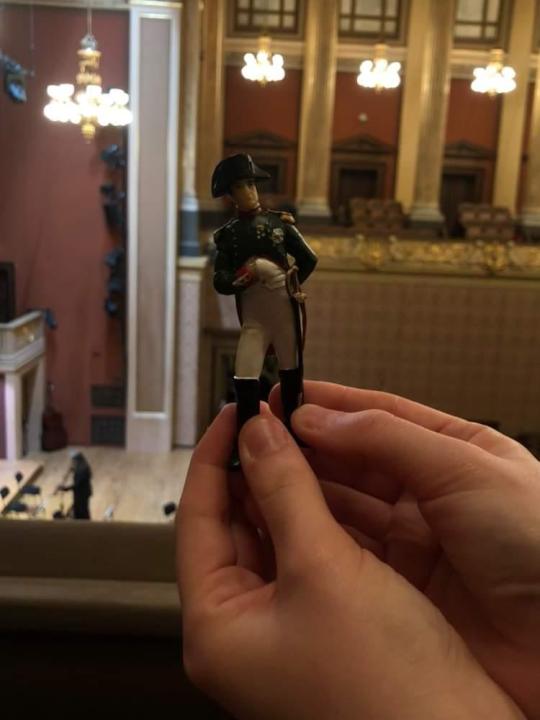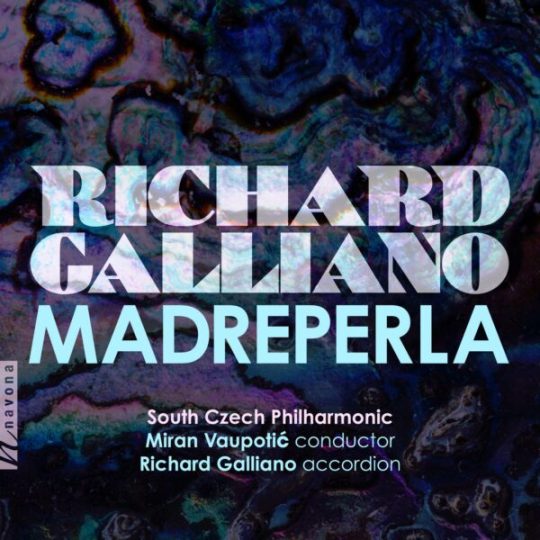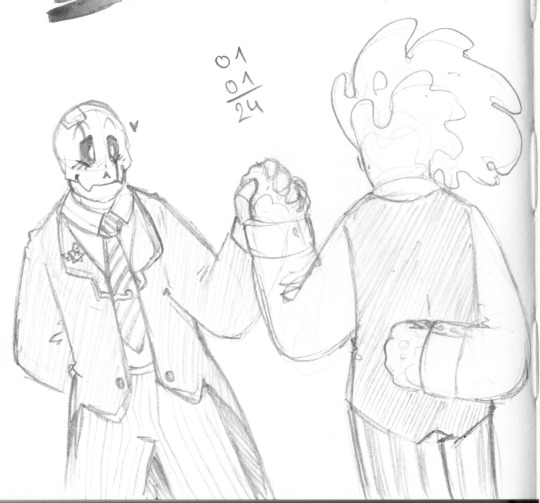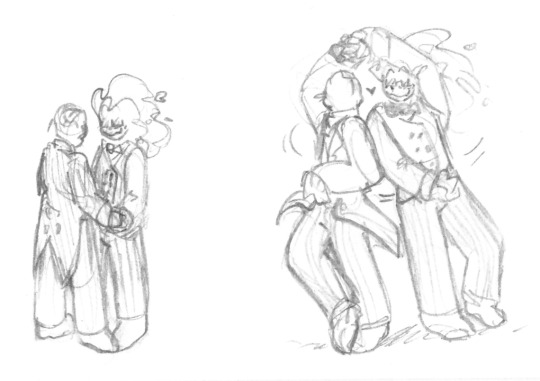#Czech Philharmonic
Text
Yesterday me and my sister went to Rudolfinum to hear Czech Philharmonic orchestra with...
NACHOLEON


He heard Mozart's and Telemann's symphonies conducted by Giovanni Antonini. 🖤💖🖤
(P.S. He was attacked by anti-napoleonic opposition consisting of 1 house cat named Míňa, he lost his nacho chip due to this attack. He is planning on getting it back tho.)
16 notes
·
View notes
Text
Classical Music At The Movies
Classical music in films has long been a staple of the cinema experience and for good reason: music is integral to our emotional experience of film. We’ll look at a few examples where classical music that has made great films even greater and perhaps used in ways that give us a different perspective of the story being told
Raging Bull (1980)Pietro Mascagni (1863-1945)Intermezzo from Cavelleria…
#Act III: Aria#Adagio for Strings#Apocalypse Now#bradley-cooper#Giacomo Puccini#Intermezzo from Cavelleria Rusticana#John Oakman#Julian Bigg#Leonard Bernstein#Libor Pesek#Maestro#Mission Impossible – Rogue Nation#Music#Nessun dorma Czech Symphony Orchestra John Oakman (tenor) Prague Philharmonic Choir Julian Bigg (conductor) Platoon (1986) Samuel Barber (19#New York Philharmonic#Op. 11#Pietro Mascagni#Platoon#Prague Philharmonic Choir#Raging Bull#Richard Wagner#Ride of the Valkries#Royal Liverpool Philharmonic#Royal Philharmonic Orchestra#Samuel Barber#Turandot
0 notes
Text
Kromatika 2023 2024 Slovenska Filharmonija Ljubljana
Slovenska Filharmonija – gov.si
Last night’s performance by the Slovenia Symphony Orchestra was exceptional. Seeing them live on stage was a fantastic experience! Bulgarian Conductor Rossen Milanov led the orchestra.
Rossen Milanov Conductor – cd-cc.si kromatika
Kromatika 2023 2024
The Kromatika 2023 2024 performance last night was the sixth in a series of nine. Kromatika concerts highlight the…

View On WordPress
#Academy of Music Ljubljana#Brass Quintet SiBrass#Brass Trio RTV Slovenia#Bulgarian Conductor Rossen Milanov#Cankarjev Dom Gallus Hall Ljubljana#Horn Soloist Mihajlo Bulajić#Kromatika 2023 2024#Leoš Janáček Czech Composer#Ljubljana Conservatory#Maribor Glasbena Matica Choir and Orchestra#Marjan Kozina Symphonic Poem Antiquity (Davnina)#Marjan Kozina Symphony in Four Movements#Novo Mesto Slovenia#Orchestral Rhapsody Taras Bulba by Czech Composer Leoš Janáček#Post-War Slovenian Philharmonic#Reinhold Glière Concerto for Horn#RTV Slovenia Symphony Orchestra Ljubljana#Russian Composer Reinhold Glière#Russian Novelist Nikolaj Gogol#Slovenia Composer Marjan Kozina#Slovenia Symphony Orchestra#Slovenian Partisan Army 1941-1945#Slovenska Filharmonija#Taras Bulba and Other Tales#Wind Quintet Quintologia#Zaporozhian Cossack Taras Bulba
0 notes
Text
MUZYCZNE REKOMENDACJE: Richard Galliano & South Czech Philharmonic, Miran Vaupotić “Madreperla”
Parma Recordings, 2023
Znakomity akordeonista Richard Galliano na swojej najnowszej płycie prezentuje własne kompozycje wykonane z towarzyszeniem orkiestry. W nagraniach wzięła udział South Czech Philharmonic pod dyrekcją Mirana Vaupotića.
To nie pierwsza współpraca Galliano z orkiestrą. Liczne są również jego nagrania z kameralnymi zespołami muzyki klasycznej. Na albumie znalazły się trzy…

View On WordPress
0 notes
Text



listening to Czech Philharmonic's new year concert and drawing blorbos dancing. good two hours.
#razzmatazz related drawings#grillby#grillster#gaster#fanart#rough#undertale#traditional art#i think i. ALMOST have the rough sketchy shape of a shoe down#the moment i need to add any detail it explodes under my hands though rip fhsdkhj#gaster's little tails can work ALMOST as well as a skirt hfaskj#I STILL HAVE THAT WIP WHERE THEY GO TO A BALL SITTING IN MY DRAFTS...... OUGH#i need to replay undertale so I can absorb papyrus' and sans' voice so I can properly finish their little part in it
40 notes
·
View notes
Text
YouTube Links: Beethoven 6, Dvořák 7
Submitter's comments:
Beethoven 6 (1 submittal)
No comments
Dvořák 7 (1 submittal)
I saw Dvořak's 8th and 9th symphonies on the list and knew I couldn't let you get away with not including his 7th. It's a hot take, I know, but not only think do I think it bests the Czech maestro's two follow-ups — I also believe it to be the greatest symphony ever written. And I've heard a ton! It's a stormy piece, full of diminished sevenths, that weaves bold Germanic influence (particularly Brahms) and the rustic Czech folk music that defined Dvořak's earlier pieces.
(Timestamps from this recording, with Kubelik conducting the Bavarian Radio in 1978. I wish his '71 recording with the Berlin Philharmonic was on YT but I guess we can't have nice things.)
Dvořak starts off with low rumblings from the timpani and strings, and introduces a terrifically Brahmsian 6/8 theme. The first movement is amazing, if not perfect — setting a high bar for a symphony that somehow still gets *better with each movement*. The second movement, which begins at 11:41, is a phenomenal work of beauty from the moment you first hear the wistful clarinet theme. It first reaches a climax at 14:53, and then later at 18:24. Supposedly, part of the inspiration for this movement was the death of his mother, which makes it all the more impactful. The following scherzo (20:55) does an incredible job of balancing a melody and counter-melody, and the trio (23:27) helps make this one of the best scherzi out there, combining a light touch with a resonant underlying emotional current. However, as good as the first 3/4 of the symphony is, it pales in comparison to the magnificent finale vaguely in sonata form (28:17). Immediately heard is a rising octave theme that collapses to an almost frightening G♯ (tritone in D minor), later developed into a soaring arpeggio theme in the strings (29:07). A more serene secondary theme follows, before leading into the development, starting with the clarinet playing the arpeggio theme at 31:27. The initial octave theme and the arpeggio theme combine at 33:14 to mysterious effect. Finally, at 36:19, the piece ends with a dramatic — though not drawn-out — climax, famously concluding with a Picardy third.
63 notes
·
View notes
Text
Sonic 30th Anniversary Symphony (2021) - My reaction 3 years later
youtube
I am going to admit one thing. I am a Sonic fan, and it has always been this way since 2006 when I got my hands on Sonic Advance 3 for my Game Boy Advance SP. At the time I was one year away from starting elementary school and my family was not well off at the time, so I had to make do with what I could play. Little did I know that my first encounter with the blue hedgehog would change my life forever as I know it today.
Then as I grew older I was able to get some extra games for the systems I did own, such as my childhood 32 bit console, the Sega Saturn. I got Sonic Jam which was my first gateway drug to the classic 16-bit Sonic games, and I even got to roam around in the Sonic World for a bit, doing tasks like collecting rings and such. The Sonic series has its ups and downs, sure, but there is one thing that the Sonic series never fails on, and it became even more apparent when I saw this comment on one particular live-stream where a music teacher was gob-smacked by how fuckin' awesome the Sonic Adventure 2 soundtrack was!

Anyway, this little long-winded intro out of the way, though it still rings true as the picture says. Let's get right into it. As a 30th anniversary birthday present to Sega's premier franchise Sonic the Hedgehog in 2021, Sega decided "Why not make it bigger and better?" They got some Czech Republic philharmonic orchestra to do the orchestrated medleys for many a Sonic game under the sun, all of which remain one of my favorites. Keep in mind, this Symphony came out before Sonic Frontiers and Superstars. Also, I am not the best in terms of being a music critic unlike the Anthony Fantano types so my reviews of them are going to be relatively brief.
Part 1: Countdown
The music playing during the first 15 minutes of countdown is nothing short of spectacular. The track list is as follows:
A New Journey - Sonic Unleashed
Comfort Zone (Main Menu) - Sonic Mania/Plus
Sonic Goes U.G. Mix - Sonic Gems Collection
Fist Bump (Piano Version - Theater Room) - Sonic Forces
Mission (theme of Sonic 3D Blast) - Sonic Generations
Tropical Resort (Area Theme) - Sonic Colours
Part 2: The Orchestra
The Philarmonic Orchestra masterfully conducted a beautiful rearrangement of almost every Sonic game's soundtrack out there. I say "almost every" because for the Orchestra portion it's missing Sonic CD, the GBA and DS Sonic games and Sonic Boom. But that's minor substitutions in favor of something a lot grander, and I appreciate it. I mean, they even represented games like Sonic Drift 2 and Tails Adventures! Even NiGHTS got a shoutout. How about that for cool?
Part 3: Tomoya Ohtani
Tomoya Ohtani Band. Oh man, what can I say? Well, they played three songs, so let's get right to it.
Reach for the Stars (Re-Colors)
The Re-Colors version of Reach for the Stars as found in Sonic Colours Ultimate, the remaster of the Nintendo Wii game now available on PS4/5, XBOX, Switch and PC. This song absolutely rocked the socks off when I first played the original game on the Wii, and this arrangement is even better still.
Speak with Your Heart (Original + Rainbow Mix)
Things go normal for the first few minutes of this song, which I like, and then Tomoya Ohtani drops a bombshell when it turns into the "Rainbow Mix" which has a trap beat type vibe to it. I love it!
Endless Possibility from Sonic Unleashed (vocals: Nathan Sharp)
Nathan Sharp is the guy who sings covers of Sonic songs under the best name you could ever give, "NateWantsToBattle" under his record label "Give Heart Records". Endless Possibility is a song that people have loved for years and years and years. It's a song which was originally performed by the same people that did the vocal intro for Phineas and Ferb. Nathan Sharp swoops in and delivers the BEST version of the song yet!
Part 4: Crush 40 (Jun Senoue & Johnny Gioeli)
Crush 40 is also a staple among Sonic fans. From hit songs like Open Your Heart, Live and Learn, Sonic Heroes, I Am... All of Me, and so on, their music has touched lives everywhere around the world. Fun fact, they used to be known as Sons of Angels for a short period of time, where some of their Sons of Angels-era songs were used in the Sega arcade game NASCAR Arcade. The songs in NASCAR Arcade would be released in the only music album to bear the Sons of Angels artist name, "Thrill of the Feel". Speaking of which, they sang six songs before adding two more after fans (this was in 2021 and we were still in lockdown so....) "demanded" more from them. Fun fact: Jun Senoue also did some songs for the Game no Kanzume "Sega Games Can" discs for the Sega Mega CD. Johnny Gioeli also provided vocals for another band under his wing called Hardline. The six initial songs are as follows, which all really will rock your sound system off.
Open Your Heart (Sonic Adventure)
Sonic Heroes
Green Light Ride (Team Sonic Racing)
Sonic Boom (Sonic CD) (Crush 40 VS Cash Cash version)
I Am... All of Me (Shadow the Hedgehog)
Knight of the Wind (Sonic and the Black Knight)
Part 5: The Grand Finale Songs
Whooo~!!! Here comes the big ones. Two legendary songs all from one game. All before ending it off with an orchestrated mix of "Friends" by Hyper Potions.
These two songs are all from one of the best Sonic games of all time, Sonic Adventure 2.
Escape from the City (vocals: Nathan Sharp)
No one in their right mind would want to tell you that this song from after Sonic jumps off the helicopter in a bid to escape GUN forces is not legendary.
Yet here is Escape from the City, one of the BEST Sonic songs. And, of course, another spotlight by the King of Sonic song covers, Nathan Sharp. The Philarmonic Orchestra also added to the grand vibe of the song by making it even better still.
Live and Learn
There's nothing I can say. One of the GOAT (Greatest of All Time) Sonic songs just got a whole lot better.
7 notes
·
View notes
Text
youtube
Zdenek Fibich ( 1850,Vseborice-1900, Prague):Symphony Nº3 in E-minor ,Op.53 (1898)
I.Allegro inquieto : 00:00 II. Allegro con fuoco-Adagio : 09:48 III. Scherzo&Trio. Vivo e grazioso : 19:26 IV. Allegro maestoso-Allegro vivace : 26:19
Czech Philharmonic Orchestra Gerd Albrecht
4 notes
·
View notes
Text
Má Vlast, JB1:112: 2. Vltava - Czech Philharmonic Orchestra & Jiří Bělohlávek
Má Vlast, JB1:112: 2. Vltava by Czech Philharmonic Orchestra & Jiří Bělohlávek https://www.shazam.com/track/383020813/m%C3%A1-vlast-jb1-112-2-vltava?referrer=share
🎶🎹🎻
4 notes
·
View notes
Text
Born in Hamamatsu, Japan, and educated at Boston’s Berklee College of Music, renowned jazz pianist and composer Hiromi Uehara – known professionally as Hiromi – splits her time between homes in New York and Tokyo. Her musical skills were recognized from an early age. At 14, Hiromi performed with the Czech Philharmonic Orchestra. Three years later, Chick Corea invited her to share the stage at his Tokyo concert. Recognized for her artistry by DownBeat’s annual critics and readers polls, Hiromi is currently touring to promote her album “Sonicwonderland.” Fans may follow her music and travel updates on Instagram. This interview has been edited for clarity and length.
4 notes
·
View notes
Text



OTD in Music History: Composer Antonin Dvorak (1841 - 1904) leads the London Philharmonic in the world premiere of his immortal Cello Concerto, with English cellist Leo Stern (1862 - 1904) playing the soloist’s part. It is immediately hailed as a masterpiece, and to this day, it is widely hailed as the finest cello concerto ever written. Upon hearing it for the first time, Dvorak's good friend Johannes Brahms (1833 – 1897) allegedly remarked: “Why on Earth didn’t I know that one could write a cello concerto like this? If I had only known, I would have written one myself long ago…”
The first Bohemian composer to truly achieve worldwide recognition, Dvorak is notable for the strong "nationalist" bent of his music.
Bedrich Smetana (1824 - 1884) -- Dvorak’s senior by 17 years -- had already laid the foundations of the Czech nationalist movement in music, and is recognized as “The Father of Czech Music” within the Czech Republic, but after Smetana’s tragic early death from syphilis, it fell to Dvorak to develop and extend this legacy in an impressive series of works that have achieved lasting popularity comparable with any music to come out of Germany, France, Italy, or Russia.
The secret to Dvorak's success lies first and foremost in his incredible gift for melody, and secondarily in the instantly recognizable and delightfully fresh Czech folk character displayed in much of his best music. Dvorak composed in all major musical genres, and his oeuvre contains works that can justifiably be hailed as true masterpieces in every single major form – a very unusual accomplishment, even among the rarified ranks of “the great composers.”
PICTURED: A beautiful “Imperial”-sized cabinet photograph of Dvorak, which Dvorak signed and inscribed to Hungarian music critic Andor Merkler in Budapest in 1899. This photo was signed on the occasion of the first performance of Dvorak’s Cello Concerto to take place with Dvorak conducting *and* Hanus Wihan serving as the soloist. (Wihan was the cellist who had requested that Dvorak write the concerto, as well as the dedicatee of the work – but for logistical reasons, Stern had ended up giving the world premiere several years earlier.)
#Antonin Dvorak#Dvorak#Antonín Dvořák#Dvořák#classical music#music history#composer#classical composer#classical#classical studies#Seventh Symphony#Symphony#organist#Concerto#Concert#ouvertura b moll#Overture#Sonata#Organ#Piano#classical piano#classical pianist#pianist#maestro#Romeo and Juliet#Nocturne#Serenade#Slavonic Dances#Violin Concerto#Othello
33 notes
·
View notes
Text
underrated aspect of the classic direct to vhs barbie movies is how they are all for some reason scored by the Czech Philharmonic Chamber Orchestra
10 notes
·
View notes
Text

(English / Español)
Chemical Reactions (2020) is a joint album project presented by Gavin Harrison and Antoine Fafard. The original music on this album features a hybrid between the progressive-fusion sonic approach and the world of chamber and orchestral music. Fafard’s compositions highlight Harrison’s innovative drumming through this intense and unique journey of epic proportions.
The album kicks in with Transmutation Circle, a piece where drums and electric bass interact with a string quartet, while Harrison provides occasional marimba parts to the music. The format on this first piece is the blueprint of almost half the album. Singular Quartz follows and showcases a different orchestration and where drums and bass play along a violin, cello, marimba and vibraphone. On this track, Jerry Goodman who by now has been a frequent collaborator to Fafard’s music, performs the acoustic and electric violin parts.
The album concludes with Holding Back the Clock and Chemical Reactions, two pieces where Harrison and Fafard perform with the Janáček Philharmonic Orchestra. Based in Ostrava, Czech Republic, the symphonic ensemble was recorded back in March 2016 and conducted by Anthony Armore.
Chemical Reactions offers a true fusion of musical styles and tones. It was created to stretch out artistic possibilities and open up new horizons.
youtube
Chemical Reactions (2020) es un proyecto discográfico conjunto presentado por Gavin Harrison ( drums, percussion) y Antoine Fafard (bass) . La música original de este álbum presenta un híbrido entre el enfoque sónico de la fusión progresiva y el mundo de la música de cámara y orquestal. Las composiciones de Fafard realzan la innovadora batería de Harrison a través de este viaje intenso y único de proporciones épicas.
El álbum arranca con Transmutation Circle, una pieza en la que la batería y el bajo eléctrico interactúan con un cuarteto de cuerda, mientras Harrison aporta ocasionales partes de marimba a la música. El formato de esta primera pieza es el esquema de casi la mitad del álbum. Le sigue Singular Quartz, con una orquestación diferente en la que la batería y el bajo tocan junto a un violín, un violonchelo, una marimba y un vibráfono. En este tema, Jerry Goodman, colaborador habitual de la música de Fafard, interpreta las partes de violín acústico y eléctrico.
El álbum concluye con Holding Back the Clock y Chemical Reactions, dos piezas en las que Harrison y Fafard actúan con la Orquesta Filarmónica Janáček. Con sede en Ostrava (República Checa), el conjunto sinfónico fue grabado en marzo de 2016 y dirigido por Anthony Armore.
Chemical Reactions ofrece una verdadera fusión de estilos y tonos musicales. Fue creado para ampliar las posibilidades artísticas y abrir nuevos horizontes.
Source: Bandcamp.com
2 notes
·
View notes
Text
Carl Davis 1936 – 2023

Carl Davis
October 28, 1936 – August 3, 2023
American-Born British Conductor and Composer.
Order of the British Empire Recipient
Born in Brooklyn, New York
Died in Oxford, England
Bafta-Winning Composer Carl Davis Dies Aged 86 - The Guardian
Musician best known for BBC’s Pride and Prejudice and 1981’s The French Lieutenant’s Woman
also composed for silent film, stage and concert hall
Carl Davis, ‘French Lieutenant’s Woman’ and ‘Napoleon’ Composer, Dies at 86 - Hollywood Reporter
His music for classics stimulated a global revival of silent film performance with live orchestras.
Carl Davis, BAFTA-Winning Composer of ‘The French Lieutenant’s Woman,’ Dies at 86 - Variety
Carl Davis - Wikipedia
♪♪♪ ♪♪♪ ♪♪♪

Carl Davis and The City of Prague Philharmonic Orchestra -
End Titles Theme, The World at War (1973 | 2004)
Carl Davis
from:
"The World at War" Soundtrack
(30th Anniversary Edition)
Orchestral | Soundtrack
JukeHostUK
(left click = play)
(320kbps)
Personnel:
Carl Davis: Conductor
The City of Prague Philharmonic Orchestra
Recorded:
@ The Barrandov Smecky Soundstage
in Prague, The Czech Republic
during August of 2003
Released:
on January 20, 2004
Silva Screen Records
Composed in 1973
♪♪♪ ♪♪♪ ♪♪♪
5 notes
·
View notes
Text
Hiromi Uehara
youtube
Pianist and composer Hiromi Uehara, known to her fans simply as Hiromi, was born in 1979 in Hamamatsu, Japan. Hiromi performed with the Czech Philharmonic Orchestra at the age of 14. In 2003, she released her first album, and won Recording Industry Association of Japan’s Jazz Album of the Year Award. Hiromi performed at the Kennedy Center in 2004 and in 2022. In 2021, she performed at the opening ceremony of the Tokyo Olympics.
8 notes
·
View notes
Text
YouTube Links: Dvořák 7, Saint-Saëns 3
Comments:
Dvořák 7
I saw Dvořak's 8th and 9th symphonies on the list and knew I couldn't let you get away with not including his 7th. It's a hot take, I know, but not only think do I think it bests the Czech maestro's two follow-ups — I also believe it to be the greatest symphony ever written. And I've heard a ton! It's a stormy piece, full of diminished sevenths, that weaves bold Germanic influence (particularly Brahms) and the rustic Czech folk music that defined Dvořak's earlier pieces.
(Timestamps from this recording, with Kubelik conducting the Bavarian Radio in 1978. I wish his '71 recording with the Berlin Philharmonic was on YT but I guess we can't have nice things.)
Dvořak starts off with low rumblings from the timpani and strings, and introduces a terrifically Brahmsian 6/8 theme. The first movement is amazing, if not perfect — setting a high bar for a symphony that somehow still gets *better with each movement*. The second movement, which begins at 11:41, is a phenomenal work of beauty from the moment you first hear the wistful clarinet theme. It first reaches a climax at 14:53, and then later at 18:24. Supposedly, part of the inspiration for this movement was the death of his mother, which makes it all the more impactful. The following scherzo (20:55) does an incredible job of balancing a melody and counter-melody, and the trio (23:27) helps make this one of the best scherzi out there, combining a light touch with a resonant underlying emotional current. However, as good as the first 3/4 of the symphony is, it pales in comparison to the magnificent finale vaguely in sonata form (28:17). Immediately heard is a rising octave theme that collapses to an almost frightening G♯ (tritone in D minor), later developed into a soaring arpeggio theme in the strings (29:07). A more serene secondary theme follows, before leading into the development, starting with the clarinet playing the arpeggio theme at 31:27. The initial octave theme and the arpeggio theme combine at 33:14 to mysterious effect. Finally, at 36:19, the piece ends with a dramatic — though not drawn-out — climax, famously concluding with a Picardy third.
Saint-Saëns 3
the use of the pipe organ is exceptional


17 notes
·
View notes